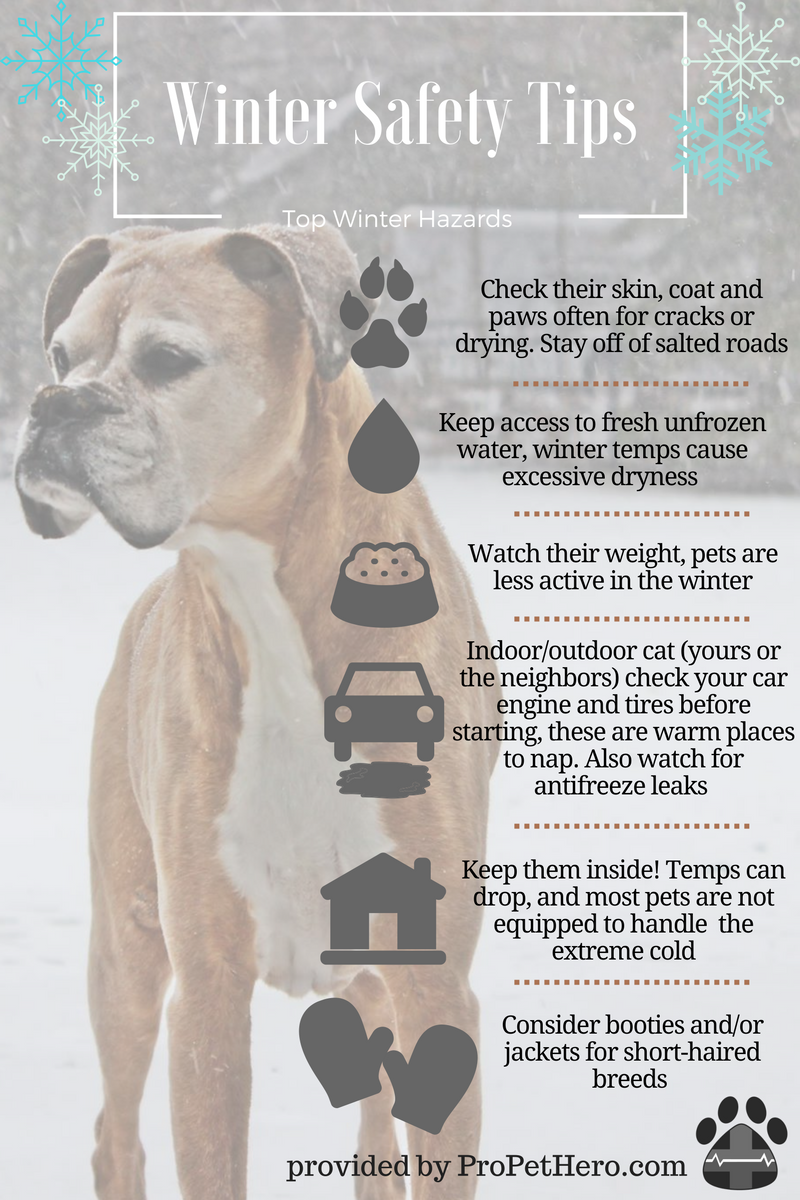Baby its Cold Outside
And it will only get colder for most of us. While we can embrace sweater weather, for our pets the transition can often be harsher. Please make yourself aware of the safety concerns the cold posses with the list below and the infographic included.
Skin, Coat & Feet Condition
- Inspect pet paws regularly to check for cracked pads, broken nails or snow/salt damage. Remember to keep your pets off the salt as much as possible, it can cause chemical burns on their feet
- Brush their coat regularly to distribute natural oils to the skin.
- Supply winter paw protection if needed such as certain preventative creams or booties. Remember to use paw safe ice melt
Winter Watering and Feeding
- Keep access to fresh water that isn’t subject to freeze. Even though we sweat and they pant more in the warmer months, studies show we all lose more water during the dry winter months
- Pets tend to be less active during the winter to conserve energy. Reduce their food based on their energy level. Don’t let their winter plumage get out of control!
Check Your Car Before You Drive Off

- Watch for antifreeze leaks-they can be deadly to pets!
- Get into the habit of checking wheel-wells and under the hood especially if the car has recently been out driving. Cats especially like to crawl and nap in warm spots
Keep Them Inside & Winterize
- Keep pets inside, most are not equipped to handle extreme or long exposure to cold
- Use protective screens around fireplaces and maintain supervision in the area
- Install carbon monoxide detectors for the safety of your family and your pets
- Keep the temperature level. Animals are more sensitive to temperature changes than we are
- Remember to keep them safe from holiday decoration dangers that might still be looming
Frostbite
- Frostbite most frequently affects areas least covered by fur
- Signs include red or swollen areas or skin that is very pale and white
- To treat frostbite, immerse the area in warm water for 15-20 minutes. Never use hot water! Check with your veterinarian
- Use coats or sweaters on short-haired breeds to help regulate body temperature
Hypothermia
- Symptoms of hypothermia include shivering, low body temperature, stumbling, drowsiness and exhaustion
- To treat hypothermia, the pet’s body temperature must be raised. Surround the pet in hot water bottles, warm towels or immerse in room-temperature water and slowly add warmer water
- Try to get the animal to drink warm liquids. Call your veterinarian
Get Certified Now
To learn more about winter safety for your pets and how to act when something goes wrong, get certified now in pet first aid and CPR.
Stay warm and stay safe!








